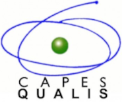Luigi y Lucio Fontana escultores: confluencias ítalo-argentinas en la plástica de principios del siglo XX
Palabras clave:
Luigi Fontana, Lucio Fontana, Retrato, Fascismo, Sociedad Dante AlighieriResumen
Lucio Fontana debuta como escultor en Rosario con el Retrato a Luis Pasteur (1924). La obra, de matriz verista-simbólica, se alinea y continúa con la obra del padre, Luigi Fontana, retratista y escultor funerario en Rosario. La experimentación con el retrato se inicia en Lucio desde la adolescencia, según atestigua una serie de dibujos en los que emerge el milieu paterno, entre Scapigliatura y Liberty milaneses. La cultura de proveniencia también tiene un peso ideológico: el nacionalismo intervencionista de la familia Fontana y la adhesión al Partido Nacional Fascista (pnf), influyen en el joven, voluntario en la Primera Guerra Mundial y militante en las filas mussolinianas. Desde los años veinte de 1900, Lucio colabora con la Sociedad Dante Alighieri, de Rosario, comprometida con la promoción de la italianidad en el extranjero, bajo la dirección del pnf. Realizará los retratos de los socios, el Dr. Guarnieri (1927), ed. E. Grimaldi (1944), inédito. En 1925, integrará la redacción de Italia, órgano informativo de la sociedad, ilustrando dos números. Las xilografías, como también los contenidos editoriales y algunas obras plásticas contemporáneas, muestran las solicitudes provenientes de los artistas promovidos por el régimen de L. Bistolfi y A. Wildt, hasta al grupo Novecento. Será el encuentro con J. Vanzo que inducirá el cambio hacia los lenguajes de las vanguardias, comprobable en la inédita placa Piovella.












